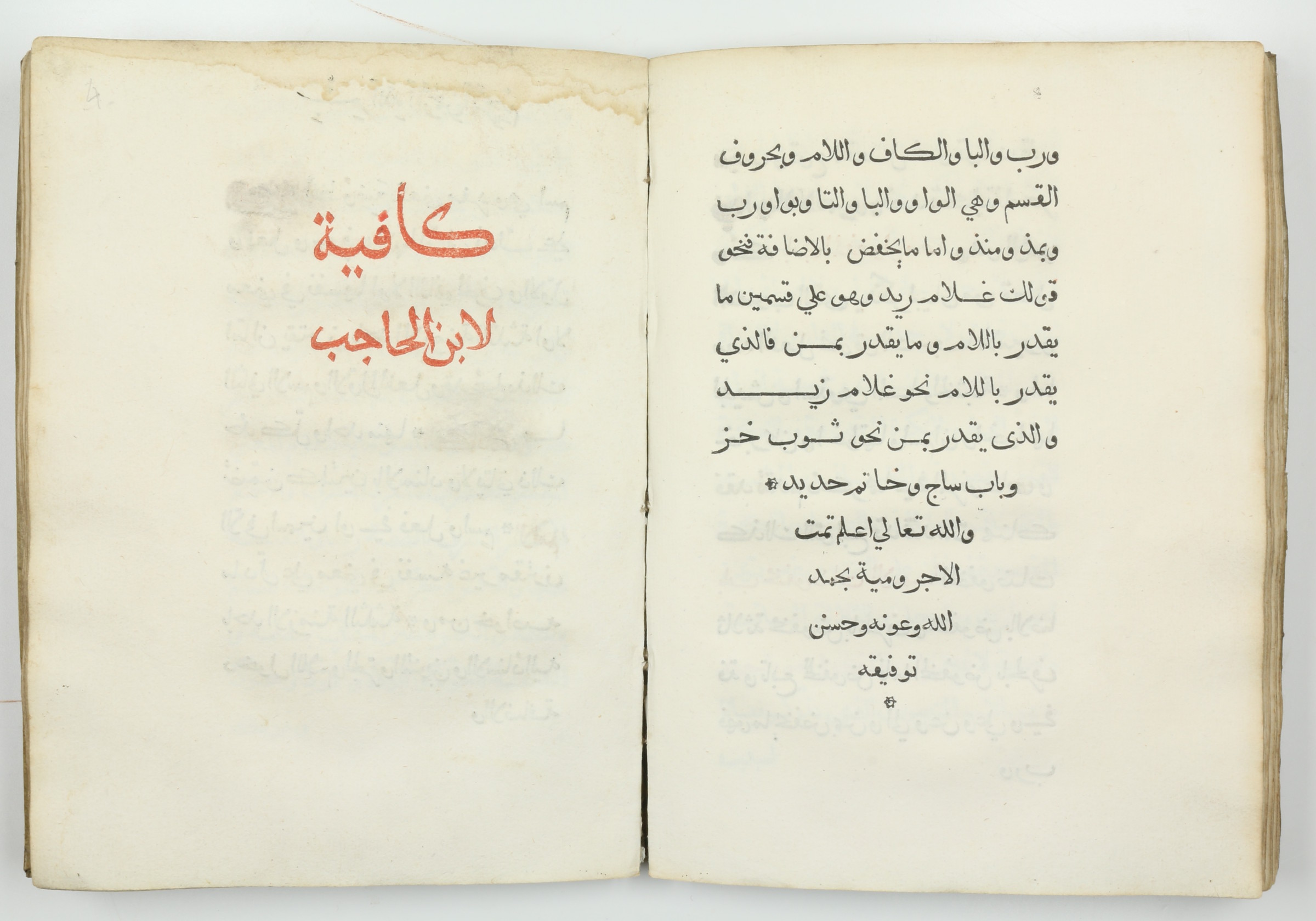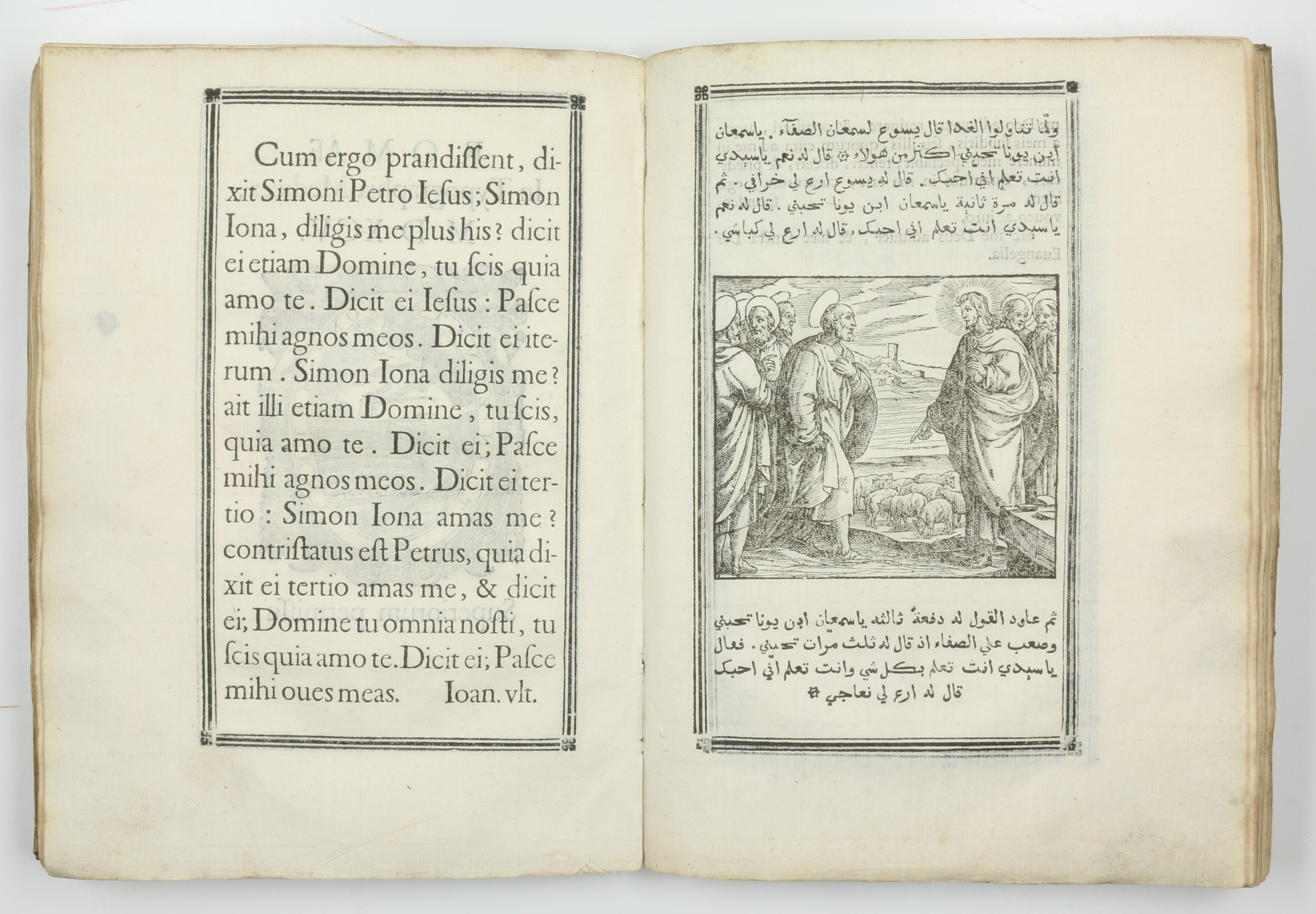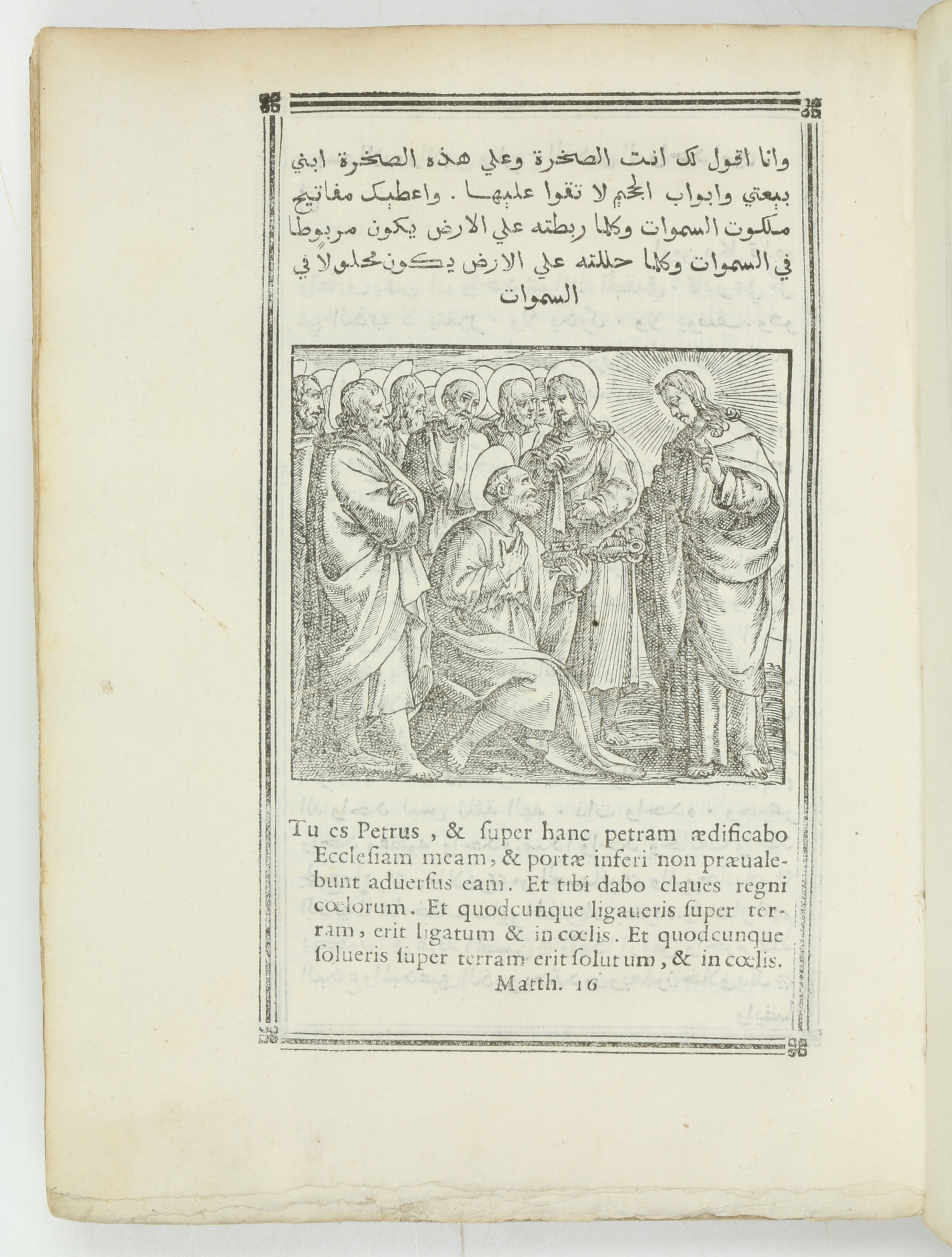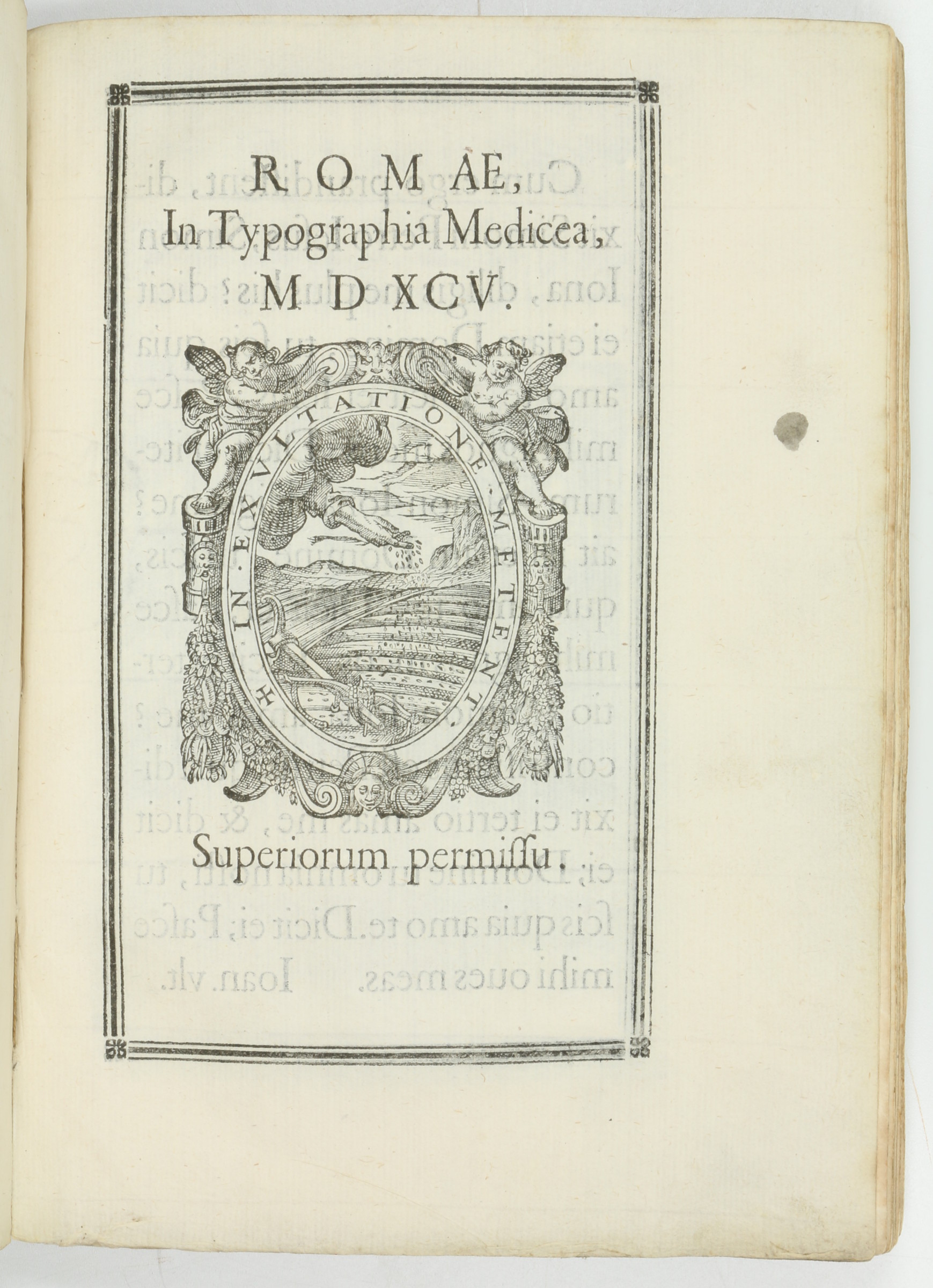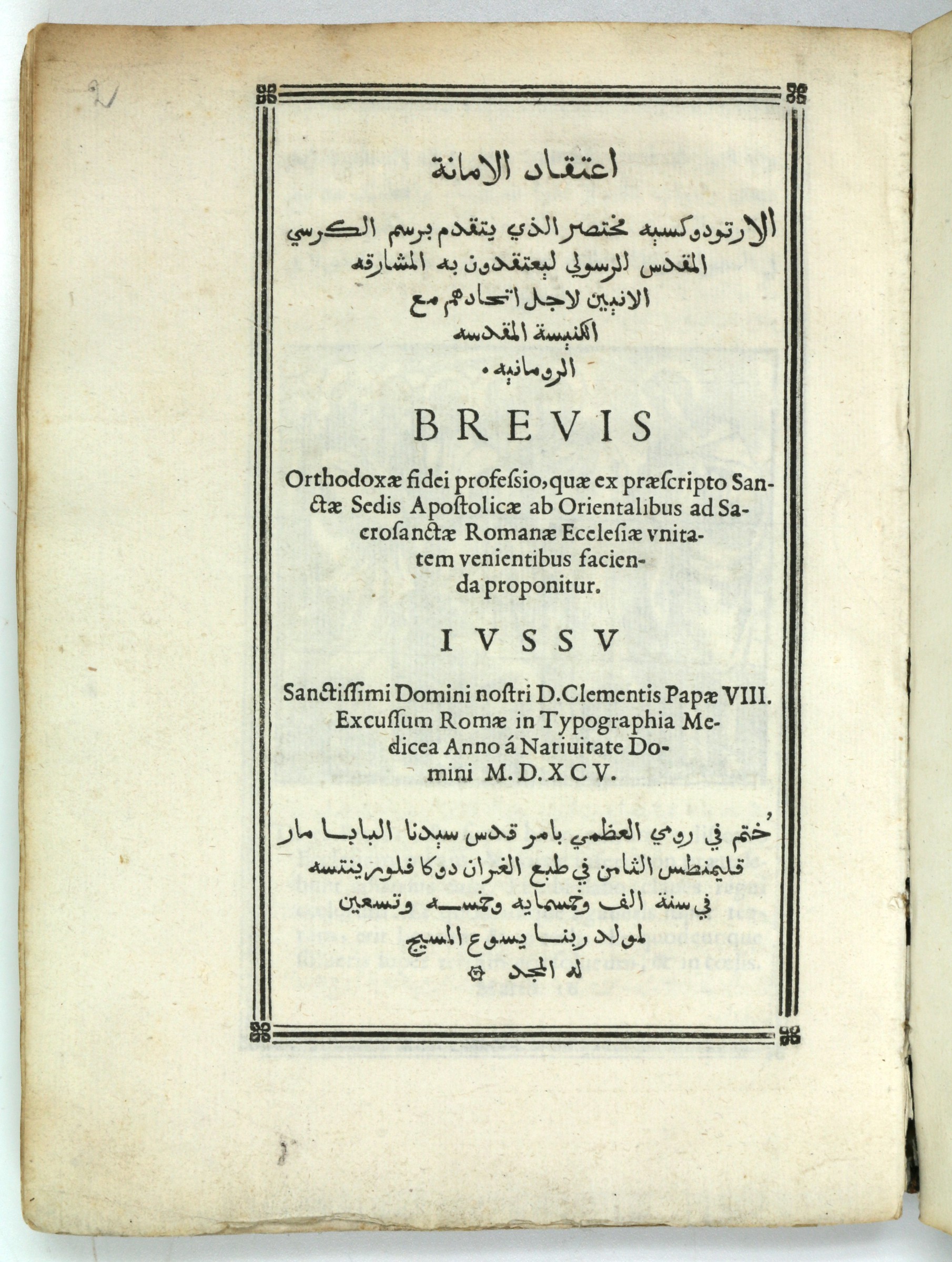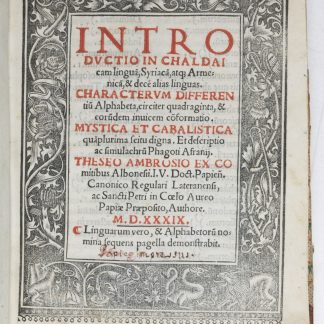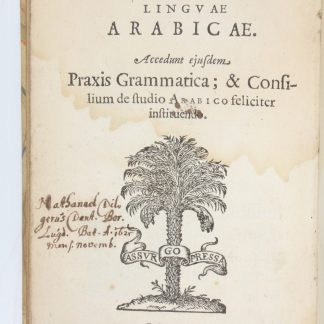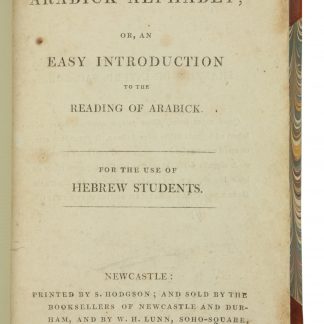Four works from the Medicea Oriental Press
Alphabetum Arabicum [and three other publications from the Medici Oriental Press].
4to (170 x 232 mm). 64 pp. With woodcut device on title-page.
(Bound with) II: [I'tiqad alamarah ...]. Brevis orthodoxae fidei professio, quae ex praescripto Sanctae Sedis Apostolicae ab Orientalibus ad Sacrosanctae Romanae Ecclesiae unitatem venientibus facienda proponitur. Ibid., 1595. (28) pp., 2 bl. ff. With 2 half-page woodcuts and woodcut device at the end.
(Bound with) III: Ibn Ajurrum, Muhammad ibn Muhammad al Sinhaji. [Kitab al-Ajurrumiyyah]. [Ibid., 1592]. (24) pp. Arabic text throughout, printed in red and black.
(Bound with) IV: Ibn al-Hajib, 'Uthman ibn-'Umar. [Kafiya li-Ibn al-Hajib]. [Ibid., 1592]. (96) pp. Arabic text throughout, printed in red and black. Contemporary full vellum with traces of a handwritten spine title.
A fine sammelband containing no fewer than four extremely rare publications from the Medicea Oriental Press, the first printing press in Europe dedicated to printing Arabic typeface. It was founded in Rome in 1584 under the direction of Giabattista Raimondi (1536-1614) and the patronage of Pope Gregory XIII. For the Arabic types, Raimondi commissioned the famous typefounder Robert Granjon. Cutting the Arabic typefaces took a long time, and the first book to bear its imprint did not appear until 1591. Until 1610 Raimondi printed only eight works with Granjon's types.
Contains individually:
I. Alphabetum Arabicum (1592). A prospectus of the Medicea's Arabic typefaces - "a masterpiece of design which not only displays Granjon's beautiful types, but contains a careful Latin Essay on the Arabic writing system" (Lunde, Arabic and the art of printing, in "Aramco World" 1981).
II. Brevis orthodoxae fidei professio (1595). Maronite confession of faith, intended for Eastern Christians who claimed to be united with the Catholic Church. Arabic and Latin parallel text on opposite pages. The woodcuts in the text are after Antonio Tempesta (1555-1630).
III. Kitab al-Ajurrumiyyah (1592). Editio princeps of a short Arabic grammar by the 14th c. scholar Muhammad al-Sanhaji from Fez (Morocco). There are also copies with a Latin title and imprint, "Grammatica Arabica in compendium redacta, quae vocatur Giarrumia".
IV. Kafiya (1592). "Editio princeps of this popular short syntax of the Arabic language, written in the 13th century by the Arabian grammarian Uthman Ibn Umar, known as Ibn al-Hajib (1175-1249). Two centuries later an Oriental printed edition was published in Istanbul (1786), but in the meantime this edition, printed in Arabic (30 point) throughout, could well have passed for a manuscript" (Smitskamp). There are also copies with a Latin title and imprint, "Grammatica arabica dicta Caphiah, auctore filio Alhagiabi".
Binding a little stained; wants ties. Later pastedowns. Occasional slight toning and some minor marginal soiling. "Kafiya" shows some dampstaining to upper edge of a1 and a4, with light offsetting of red Arabic print in the lower margin of d1v. In general, excellent, wide-margined copies throughout. Provenance: Christiaan Druve (d. 1616), abbot of the Sint-Niklaas Abbey in Veurne, with his contemporary ownership entry "Christianus Druvaeus Abb. S. Nicol. Fur. Recogita" on the title-page of the Alphabetum.
I. Edit 16, CNCE 1227. Schnurrer 41. Adams A 780. BM-STC Italian 36. OCLC 47816774. Lunde, Paul, "Arabic and the Art of Printing", in: Aramco World 32/2 (1981) (mit Abb.). J. Balagna, L'imprimerie arabe en occident (Paris 1984), p. 135. Cat. Le Livre et le Liban (mentioned p. 190; no copy in the catalogue). Not in Smitskamp (PO) or Fück.
II. Edit 16, CNCE 7571. Zenker 1571. Not in Adams.
III. Edit 16, CNCE 65819. Schnurrer 43. Adams M 1891. GAL S II, p. 332.
IV. Edit 16, CNCE 44392. Schnurrer 42 Adams U 102. GAL I, p. 303. Smitskamp (PO) 30.






